carnegie mellon university
Latest

Researchers built a low-cost camera system that recreates sound from vibrations
A CMU team says the system can recreate audio from a speaker by looking at a nearby bag of Doritos.
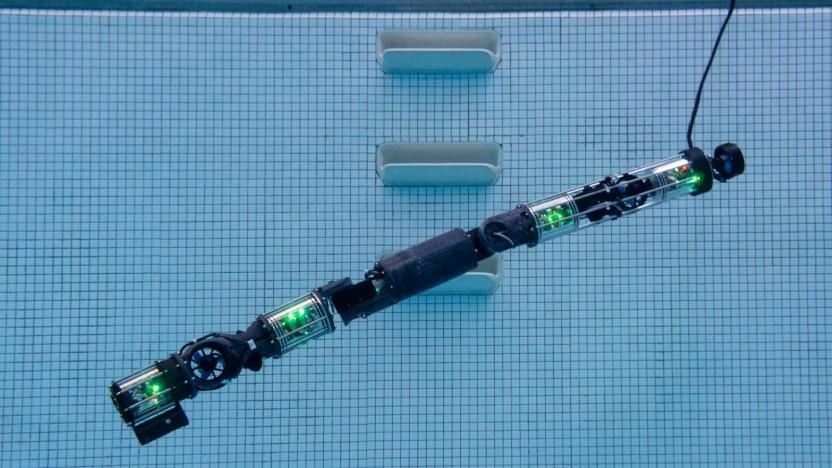
Carnegie Mellon’s latest snakebot can swim underwater
You can now add swimming to the list of things Carnegie Mellon's snake robot can do.
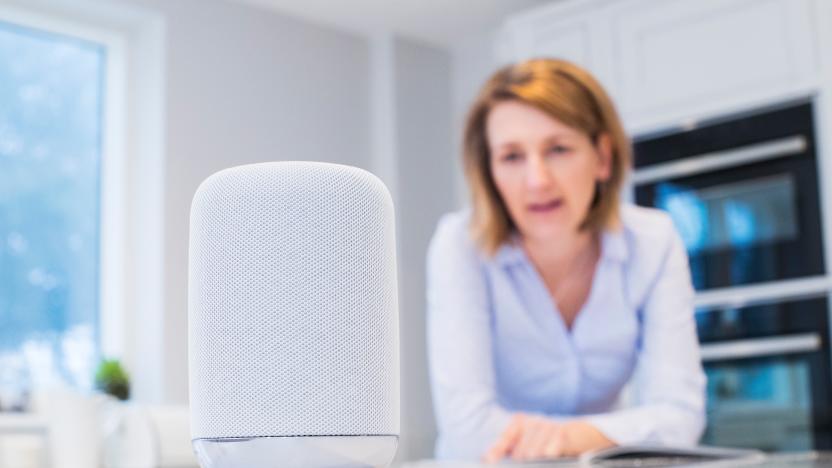
AI could tell smart speakers what direction your voice is coming from
Scientists have developed a technique that would help smart speakers know the direction where your voice is coming from.
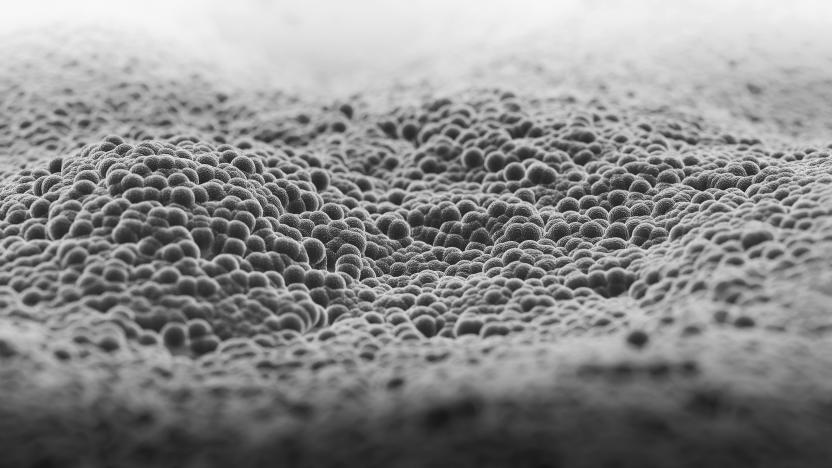
Facebook deploys its AI to find green energy storage solutions
One alternative is putting that excess power to work driving catalytic reactions. “There are a lot of different ways that we can store the energy,” Zack Ulissi, CMU Assistant Professor of Chemical Engineering and Materials Science and Engineering, told Engadget.
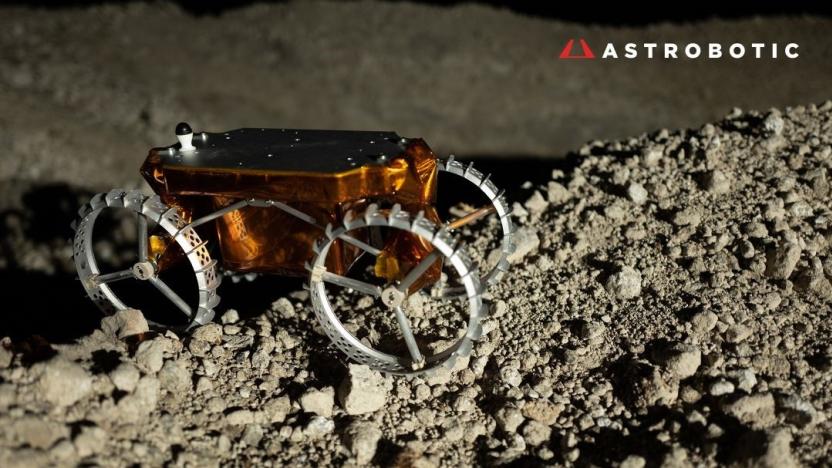
Astrobotic’s tiny Moon rover is on its way to NASA for testing
Astrobotic's lunar CubeRover is heading to Kennedy Space Center for testing.
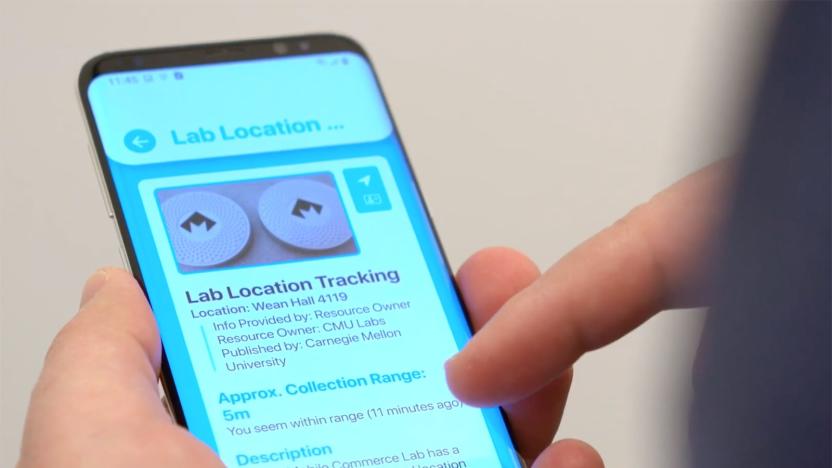
Carnegie Mellon built an 'opt-out' system for nearby tracking devices
It's getting easier to control what your smart home devices share, but what about the connected devices beyond your home? Researchers at Carnegie Mellon's CyLab think they can give you more control. They've developed an infrastructure and matching mobile app (for Android and iOS) that not only informs you about the data nearby Internet of Things devices are collecting, but lets you opt in or out. If you're not comfortable that a device in the hallway is tracking your presence, you can tell it to forget you.

A mind-controlled robot arm doesn’t have to mean brain implants
A robotic arm smoothly traces the movements of a cursor on a computer screen, controlled by the brain activity of a person sitting close by who stares straight ahead. The person wears a cap covered in electrodes. This "mind-controlled" robot limb is being manipulated by a brain-computer interface (BCI), which provides a direct link between the neural information of a brain that's wired to an electroencephalography (EEG) device and an external object.

Facebook and CMU's poker AI beat five pros at once
Facebook and Carnegie Mellon University have built another artificial intelligence bot that beat some top poker pros. While AI bots have been to best professional players in one-on-one competition, Facebook claims it's the first time a bot has been able to beat top pros in "any major benchmark game" when there's more than one opponent at a time. Pluribus bested professionals in no-limit Texas Hold'em in a couple of different formats: five AI bots and one human, and one bot and five real-life players. The researchers behind Pluribus wrote in a paper published in Science that creating such a multiplayer poker bot "is a recognized AI milestone."

Carnegie Mellon will help Argo AI advance its self-driving vehicle tech
Ford's autonomous vehicle arm Argo AI is already testing self-driving vehicles in a handful of cities. But the company has a few key puzzles to solve before it can deploy its fleets on a large scale. To help answer the remaining questions -- like how can autonomous vehicles reason in highly unstructured broken-traffic conditions -- Argo is partnering with Carnegie Mellon University (CMU). The newly formed Carnegie Mellon University Argo AI Center for Autonomous Vehicle Research will work to advance the next-generation of self-driving tech.

The evolution of cognitive architecture will deliver human-like AI
There's no one right way to build a robot, just as there's no singular means of imparting it with intelligence. Last month, Engadget spoke with Carnegie Mellon University associate research professor and the director of the Resilient Intelligent Systems Lab, Nathan Michael, whose work involves stacking and combining a robot's various piecemeal capabilities together as it learns them into an amalgamated artificial general intelligence (AGI). Think, a Roomba that learns how to vacuum, then learns how to mop, then learns how to dust and do dishes -- pretty soon, you've got Rosie from The Jetsons.
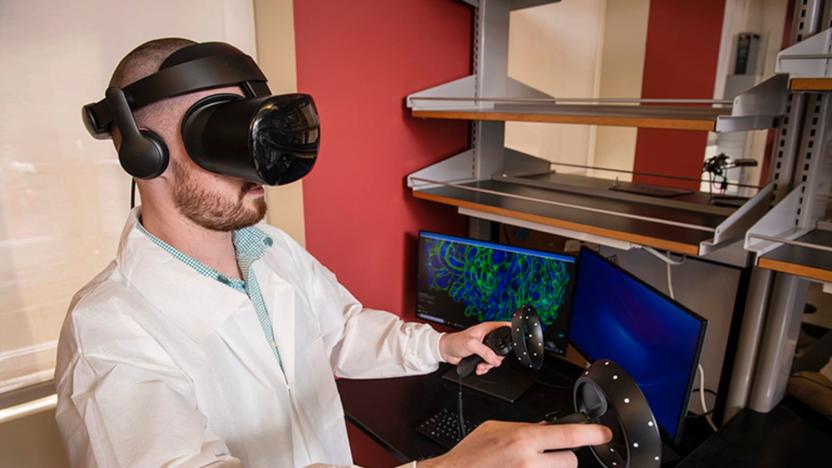
VR and microscopy help scientists see 'inside' diseases
You can only learn so much about cells by studying 2D pictures, and 3D microscope technology can produce an abundance of data that might be hard to decipher. Researchers at Carnegie Mellon University and Virginia Mason have an answer, though: let scientists walk 'inside' the cells. They've combined virtual reality with expansion microscopy (which grows samples by over 100 times) to explore cell data that would otherwise be too complex to handle. Once the cells have been imaged, labeled and compiled into data, a custom technique turns the 2D info into 3D environments.
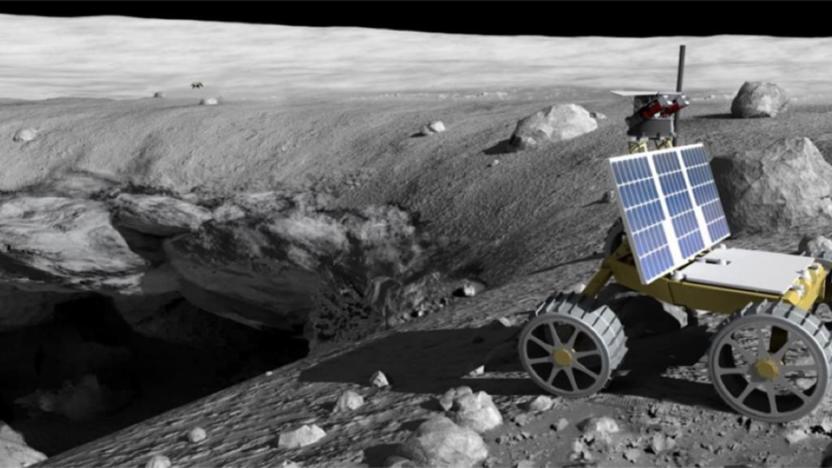
NASA advances lunar crater modeling and asteroid mining projects
NASA doesn't just want to return to the moon by 2024, it also wants to establish a "sustained human presence" and to use the moon as a hub for future Mars exploration. In order to do that, it will need new ideas and technologies, like those solicited and supported by the NASA Innovative Advanced Concepts (NIAC) program. Today, NIAC moved two projects to Phase III, the furthest any concepts have made it.

These 'cathartic' stress robots can take a beating
Whether it's a meditation app or looking at puppy videos, much of today's technology focuses on replacing your negative feelings with positive ones. But what if you want to act on all your feelings of anger, sadness and anxiety -- in a healthy way? Going off the idea that facing negative emotions head-on can be good for a person's well-being, researchers at Carnegie Mellon University created "cathartic objects" that are designed to be hit, stabbed and even sworn at. Lead by researcher Michael Luria and co-authors Amit Zoran and Jodi Forlizzi, the team presented their paper on the cathartic objects at the 2019 CHI Conference on Human Factors in Computing Systems held this month in Glasgow.

MIT’s new AI can keep streaming video from buffering
Buffering and pixelation are the scourge of streaming video. It ruins the experience for viewers, robs advertisers of revenue as said viewers tune out, and causes technical headaches for streaming services which have to engineer solutions. But a new neural network AI from MIT CSAIL may be just what the internet needs for velvety smooth streaming services.
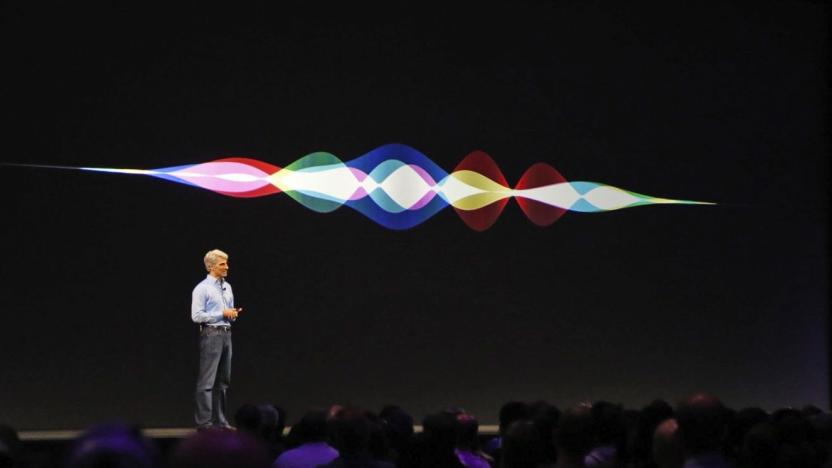
How Apple reinvigorated its AI aspirations in under a year
At its WWDC 2017 keynote on Monday, Apple showed off the fruits of its AI research labors. We saw a Siri assistant that's smart enough to interpret your intentions, an updated Metal 2 graphics suite designed for machine learning and a Photos app that can do everything its Google rival does without an internet connection. Being at the front of the AI pack is a new position for Apple to find itself in. Despite setting off the AI arms race when it introduced Siri in 2010, Apple has long lagged behind its competitors in this field. It's amazing what a year of intense R&D can do.

How artificial intelligence can be corrupted to repress free speech
The internet was supposed to become an overwhelming democratizing force against illiberal administrations. It didn't. It was supposed to open repressed citizens' eyes, expose them to new democratic ideals and help them rise up against their authoritarian governments in declaring their basic human rights. It hasn't. It was supposed to be inherently resistant to centralized control. It isn't.

Scientists turn old smartphones into all-seeing eyes
That clunky old Android phone sitting in a drawer may be more useful than you think. A team from Carnegie Mellon University has created a program called Zensors that uses connected smartphone or surveillance cameras to track your environment, figure out what's going on and give you valuable alerts and statistics. The team showed how a user can point a smartphone outside a window, circle an area of interest, and pose a natural-language question like "how many cars are in the parking lot?" Zensor then proceeds to track cars as they enter and leave, giving a business data about its customers.

Lost Andy Warhol artworks discovered on Amiga floppies from the '80s
Rediscovered artwork like a napkin Picasso or unearthed Matisse can be identified on sight, but pieces crafted in the digital age by pop-artist extraordinaire Andy Warhol and encoded in an outdated format are far more difficult to ascertain. In fact, it took the retro know-how of Carnegie Mellon University's Computer Club and a team of artists, archivists and curators to wrangle some of Warhol's lost pixels into the physical world.

Study: Facebook users sharing more personal info despite increased privacy concerns
Carnegie Mellon University conducted a study following more than 5,000 Facebook users over six years, from 2005 and 2011, and found that changes in the social network's privacy policies caused users to share more -- not less -- personal data. Lest you think this means that users suddenly trusted the site more, Carnegie Mellon says that Facebookers became more and more protective of their personal details as the social network grew in membership -- and that the uptick in shared information is a result of increasingly granular privacy settings. If you recall, Facebook introduced new in-depth privacy controls in 2010, and the study found that the release of these new settings corresponded to users sharing more personal data, both within their network of friends and with strangers and third-party applications. It's been quite some time since the new privacy policy was introduced, but the university says the sample group didn't reduce the amount of info shared with non-friends on the network, even as of 2011. The takeaway? Well, it's safe to say that more privacy controls doesn't equal more vigilance in protecting personal data, and it's certainly not a stretch to call Facebook's settings confusing. The researchers' comparison of the struggle for privacy to the eternal plight of Sisyphus? That might be a touch more dramatic.

Robot Hall of Fame inducts Big Dog, PackBot, Nao and WALL-E (video)
It's the sort of ceremony that's so magical it can only occur on even-numbered years. Inventors, educators, entertainers, college students and media folk gathered at the Carnegie Science Center in Pittsburgh, PA tonight for the 2012 inductions to the Robot Hall of Fame, a Carnegie Mellon-sponsored event created to celebrate the best of our mechanical betters. This year, the field included four categories, judged by both a jury of 107 writers, designs, entrepreneurs and academics and the public at large, each faction constituting half the voting total. The show kicked off, however, with the induction of 2010 winners, the Spirit and Opportunity Mars rovers, the da Vinci Surgical System, iRobot's Roomba, the Terminator and Huey, Dewey and Louie, a trio of robots from 1971's Silent Running. The first 'bot to secure its spot in the class of 2012, was the programmable humaoid Nao, from Aldebaran Robotics, which beat out the iRobot Create and Vex Robotics Design System in the Educational category. The PackBot military robot from iRobot took the Industrial and Service category, beating out the Kiva Mobile Robotic Fulfillment System and Woods Hole Oceanographic's Jason. Boston Dynamic's Big Dog ran over some stiff competition in the form of Willow Garage's PR2 and NASA's Robonaut to win the Research title. And WALL-E triumphed over doppelganger Johnny Five and the Jetsons' Rosie in the Entertainment category. Relive the festivities in four minutes after the break.










